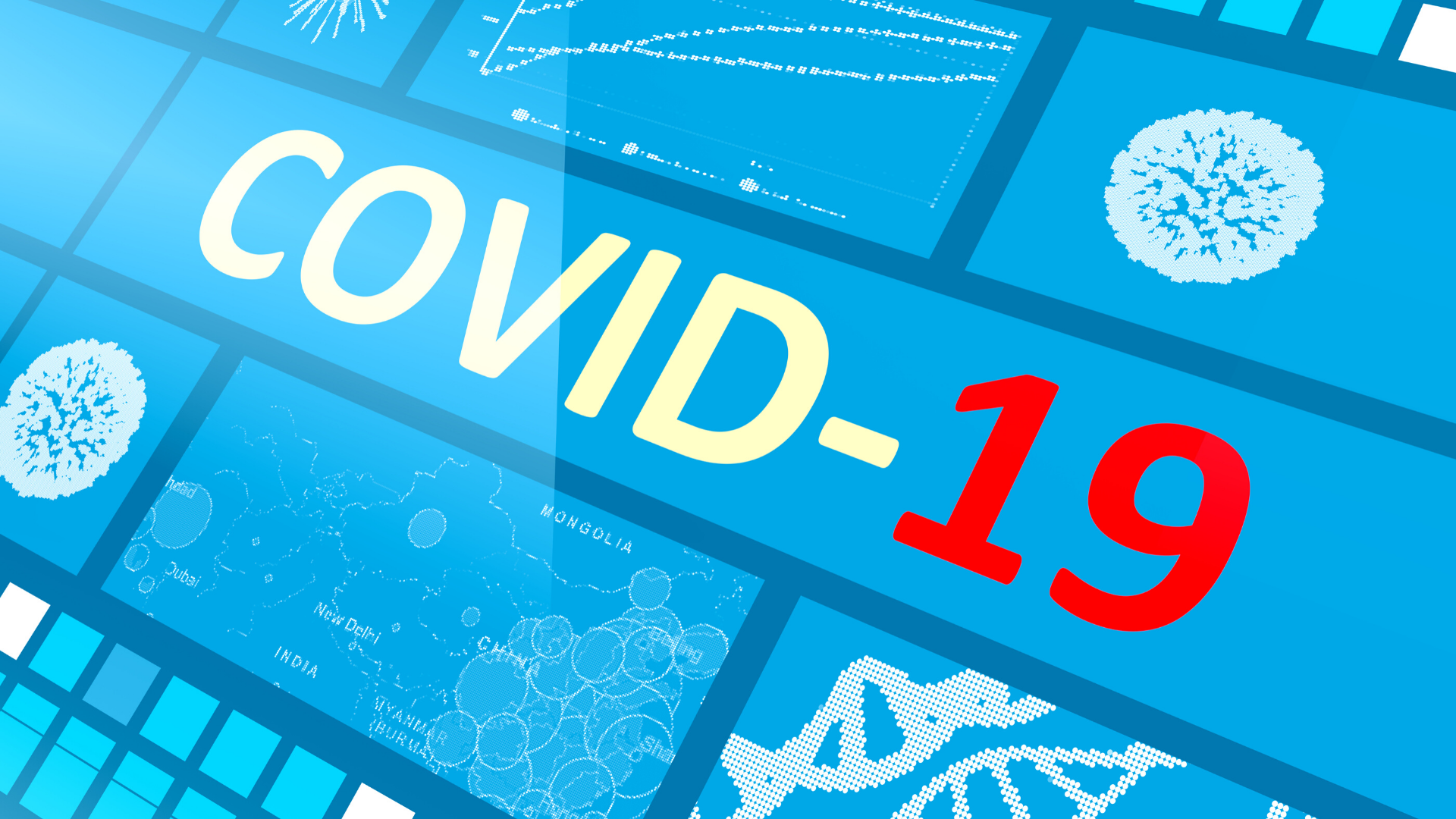1. Culture: Digital Transformation Debts post-Covid-19
The impact of the Covid-19 lockdown of businesses and government will be felt for many years to come. It is causing mega-cultural trends that are already changing us. We might not be feeling it or appreciating the shifts that are happening. It is too close to home and we are in the midst of it. But it is happening, and it is very real.
Even pre-Covid-19 digitization has been transforming all aspects of our lives. These changes were both technological and cultural.
Covid-19 has re-prioritized, stressed, and accelerated digital transformation change
In 2018 I wrote a two-part article on Digital Transformation Debt (DTD). If organizations do not address their "Debts" – the challenges we are facing from all fronts - they will pay a much heftier price: even existential one. Recently, Cisco's former CEO, John Chambers, indicated that 50% of Fortune 500 companies would not exist in 10 years. Ignoring DTD, companies were already on a downward spiral, and Covid-19 is making matters worse. The need to "Change" (here we go again) is not a luxury. It cannot be ignored. The main principle of "debt" is ignoring the painful transformational change in favor of easy or delayed solutions. Ignoring the trends and choosing easy solutions will only accumulate "the Debt." This applies to Technical Debt, but especially in the Covid-19 era, it refers to DTD.
In Part I of the two-part article I covered the following dimensions:
Organizational Culture
Value Stream Digitization
Intelligent Automation
Citizen Developers
Citizen Data Scientists
Part II covered:
6. Design Thinking
7. Customer Experience Optimization
8. The Connected World
9. The Decentralized World
10. Digital Transformation Centers of Excellence (COE)
All ten dimensions are very current. But how has Covid-19 impacted these dimensions? How about the importance and priority of Digital Transformation Debt (DTD)? As we shall see…
Addressing Digital Transformation Debt has become much more critical in the post-Covid-19 era
The pandemic was a wakeup call. Organizations of all sizes cannot take "business as usual" for granted. Addressing core cultural challenges has become critical – it is a matter of survival.
Given the critical importance of DTD, this is the first of the series that will focus on the ten dimensions.
Post-Covid-19 Culture
The importance of Culture got accentuated in the post-Covid-19 era. Transformation starts with Culture. The conventional "Org Chart" did not inspire agility, change, or empowerment in the pre-Covid-19 age.
Post-Covid-19, it has been challenged and stressed to the limit. It is a model that is no longer working - especially with the newer, technologically savvy, independent-minded, and entrepreneurial younger generations.
Connecting through Virtualization
The new norm is virtuality. The move to the virtual presence and virtual interactions is a mega digital transformational trend that will impact enterprises of all sizes forever. Video conferencing tools such as Zoom, Cisco Webex, Microsoft Teams, GoToMeeting, and others have witnessed an explosion in downloads and use. Conservatively virtual conferencing and the use of virtual conferencing tools is at least an order of magnitude more than pre-Covid-19. For example, a recent survey has indicated 72% of consumers had their first-ever virtual care visit during Covid-19. Zoom has become a household name and one of the most popular video conferencing platforms - though all the others have witnessed significant growth as well. One of my favorite ones that I use almost daily is Facebook's Portal. It has several original games and stories weaved in. Though more for personal and family use, I have used it for professional meetings, and it's quite good. Such widespread use of video conferencing tools – both for business and personal – will have a long-lasting impact on organizations and individuals for many years to come.
Flattening the Organization
Virtual meetings and virtual presence have had an equalizing and flattening effect on most organizations. Suddenly all the levels of the organizational hierarchy become accessible and physical restrictions – such as the number of people who can physically be hosted in a conference room or even the availability of conference rooms for interactions – are lifted. The speed of organizing virtual meetings, their accessibility, and the ability to record and then analyze are other key advantages that have a flattening and potentially empowerment impact on the organization – especially if the management encourages and endorses it. The top-down pyramid and functional unit organization structures are tired and passé. They do not inspire innovation or digital transformation. Employee empowerment has been elusive and hard to achieve within a rigidly hierarchical organization. The Covid-19 pandemic provides a wonderful opportunity for organizations to re-assess their rigid structures and flatten their organizations.
Flattening organizations with increased communication, collaboration, and empowerment is an irreversible trend.
We are and will continue to face many labor challenges in the Covid-19 era. A digital and agile organization with empowerment can leverage the innovative talents of its employees and improve their morals. The idea of challenging hierarchical structures, removing bosses (or replacing them with "mentors") has been around for a while. The need to quickly change and adapt to digital enterprises is compelling them to re-consider their rigid structures.
The Home Office Experience
The cultural shift is complex and multi-faceted. The reset of "normal" work in a recent survey had some impressive results. It indicated after the lockdown Employees want greater flexibility in the percentage of time they spent at home vs. office – the breakdown is 51% office and 49% home. Other trends included a focus on results vs. hours of labor: the end of the 9-5 model, changes in leadership attitudes, and desire to be upskilled. In other words, the employment world will be quite different post-Covid-19.
Trust and Empowerment: Working from home is creating a milieu of trust and productivity. In some traditional hierarchical organizations, managers wanted to physically "observe" employees at work. Now, that is still possible (through monitoring technologies) for the home office. However, increasingly managers are realizing focusing on productivity vs. control of physical presence is a much better approach. Some managers - and the HR within many organizations - are realizing they need to be more pro-active in trusting and empowering their employees (vs. micro-management that is so pervasive in traditional hierarchical organizations). The survey mentioned above indicated the individual autonomy of scheduling work increased from 7% to 22% - resulting in a much higher demand for flexibility. It hinges on trust and empowerment. This shift is a positive development in the cultural transformation. Its impact will be felt for decades to come.
Stress: Working from home alleviated some stress - such as the long hours of commute for some. But it has created others. The lockdown and quarantine have blurred the home-work boundaries and sometimes created tension within homes. Managers and HR had to mentor employees on balancing personal life and work. We are starting to see best practices and a lot of experimentation of different approaches to alleviate stressful situations for employees. Some strategies include frequent and on-point communication, clear and repeated articulation of available resources to mitigate stress, and pro-active guidance, especially for employees who are finding it challenging to work from home due to a plethora of reasons. Managers and C-level executives need to make empathy, trust, and wellbeing high priorities in the post-Covid-19 Culture.
Recommendations
So, what should organizations do to alleviate the Culture aspect of DTD – perhaps the most important one? Here are two major action items and recommendations with action items.
Prioritize Servant Leadership
Enterprises need to change their Culture by example. The need for "Servant Leadership" is compelling. The servant leader's primary focus is to serve – not to lead. Servant leaders do not try to impose their opinions or approaches on others. Instead, they attempt to serve the needs, wants, and aspirations of the people they manage or serve. The pyramid is reversed. At the top are the people or organizations you are trying to serve. The "leader" is at the bottom. As described in Service Oriented Enterprises, other characteristics include the Sharing of Vision, Involvement in Decisioning, Teamwork Focus, and others. These are top priorities in the Covid-10 era. Servant leadership is a cultural change. The executive board needs to make it a top strategic priority. C-levels, vice presidents, and managers need to go through rigorous education, training, certification, and evaluation in Servant Leadership. The Greenleaf Center for Servant Leadership is an excellent place to start.
Request: Let me know if you have case studies, best practices, good content, or technologies relevant to DTD and this article - in this episode one, Culture. I am aggregating it all for subsequent contents and if relevant and high quality, I will be more than happy to feature and reference them. Also, feel free to comment.
Meanwhile, feel free to contact Khosh Consulting - or contact me at setrag@khoshconsulting.com - if you want to conduct an assessment or a workshop for cultural innovation, most relevant techniques and technologies in the post-Covid-19 ara, as well as best practices to incrementally introduce digital transformation change.
This article was originally posted on LinkedIn.


